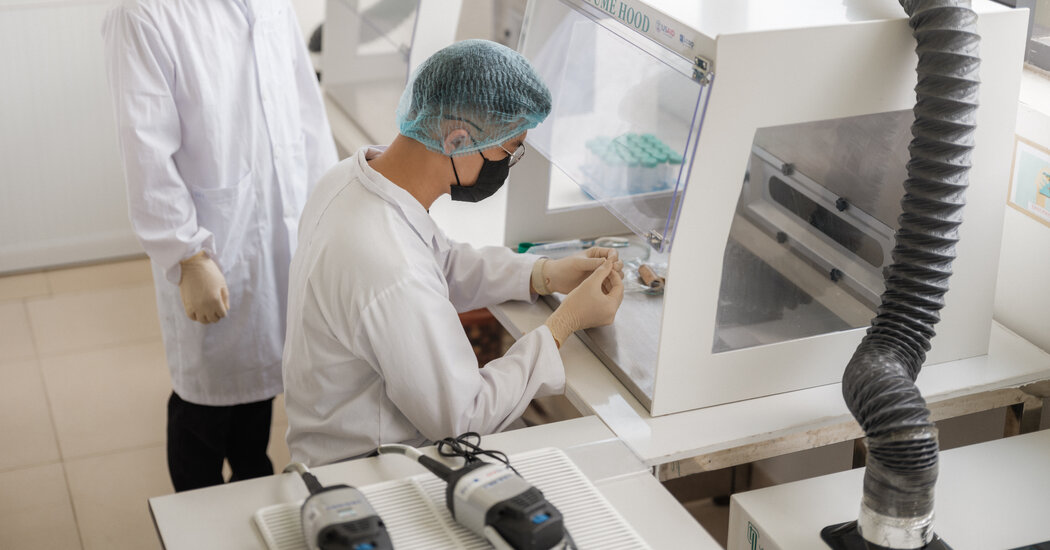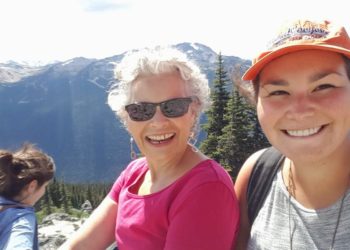The world is facing an abundance of tragic events that produce large numbers of the dead and missing people, including wars in Ukraine, Myanmar, Sudan and the Middle East, as well as wildfires and storms accelerated by climate change.
The technology of DNA-led identification is advancing rapidly — linking relatives across time and with more degraded remains, with the potential to bring names to more of the lost, and closure to more families.
A recent breakthrough by forensic scientists working with the bones of unidentified Vietnamese soldiers from the Vietnam War reflects a broader surge of innovation. With further development, scientists believe, emerging methods of DNA sequencing could bring clarity to many more challenging cases involving unidentified human remains.
What are the latest advances?
For decades, DNA analysis has been driving toward greater sensitivity and precision.
Powerful new applications of what is known as next-generation sequencing are now helping with identification of degraded remains. The techniques allow scientists to isolate and then analyze millions of DNA fragments, especially single nucleotide polymorphisms, or S.N.P.s, which are variations at single positions in the genome.
Forensic experts and organizations, including the International Commission on Missing Persons, which was formed in the 1990s to identify missing people after wars in the Balkans, see the new developments as a leap forward for identification at a large scale.
A commission program in Vietnam found a way last year to prove that a higher ratio of bones degraded by time or harsh conditions — such as tropical soil, which tends to be more acidic — can now produce precise DNA profiles leading to identification. American military scientists have recently made their own advances with remains from as far back as World War II.
Molecular biologists are still adapting the process for different circumstances, but bones that lacked the DNA needed for identification with older methods have now been found to hold enough S.N.P.s to connect, through specialized software, the dead to relatives as distant as a great-great-grandchild.
More established methods — analysis of mitochondrial DNA and short-tandem repeats, which are what led to the creation of criminal DNA databases — often require a larger amount of genetic material and offer less precision for identification.
“Now we have technology that really pinpoints those short molecules,” said Prof. Matthew Emery, a biomolecular anthropologist at Binghamton University in New York who has studied DNA identification after fires. “We can access more information.”
How does the process work?
First, human remains are collected. In Vietnam and elsewhere, scientists have prioritized teeth with intact roots and solid, large leg bones, which best preserve DNA.
The bones are cleaned to remove dirt and surface contamination. Next, each bone sample is ground into a fine powder that is mixed with chemical reagents. The goal is to release the human DNA into a solution, but this can be complicated; the reagents are expensive, and what works for individual degraded samples may vary.
When the process works, the DNA binds to glass. Other materials are poured off, leaving a colorless drop containing millions of bacterial DNA and (hopefully) DNA from the missing.
The sample then goes into a next-generation sequencing machine. These have become faster and more reliable recently — one at a lab in Hanoi fit on a desk but cost more than $200,000.
The sequencer selectively binds to human DNA fragments. It spits out sequences of DNA that special software gathers into a profile.
That profile is compared with reference samples from relatives of the missing in a database. Algorithms provide kinship analysis and determine if a high-probability match can be found.
When will the technology be widely available?
Next-generation sequencing of S.N.P.s has been widely deployed for years by archaeologists. They have used the mix of chemistry and computing techniques to sequence the genome of the woolly mammoth, explore connections between Neanderthals and modern humans and show that Siberians are genetically linked to early settlers of America.
Contemporary applications for identification, beyond genealogy kits used by companies like Ancestry.com, have been slower to arrive. But that’s changing at a handful of leading labs. From February to May, for example, forensic experts with the Armed Forces Medical Examiner System used the new methods to help identify 51 Americans who were not likely to have been named if not for the new approach.
The International Commission on Missing Persons hopes that its project in Vietnam will go even further, allowing it to identify thousands of missing Vietnamese and optimize the methods for application elsewhere.
Its researchers are already busy in Ukraine, Syria and Iraq. The project in Vietnam, however, was mainly funded by the United States Agency for International Development, and though its budget this year was restored, the money will run out in September unless the United States or other donors step in to help.
Scientists note that private industry and law enforcement agencies have hesitated to invest in the technology for missing persons because the costs are still high and payoffs uncertain.
“The infrastructure is there, but the incentive is not,” said Professor Emery in Binghamton. “That’s why we need these international organizations.”
Damien Cave leads The Times’s new bureau in Ho Chi Minh City, Vietnam, covering shifts in power across Asia and the wider world.
The post How New DNA Science Could Help More Families of the Missing appeared first on New York Times.




